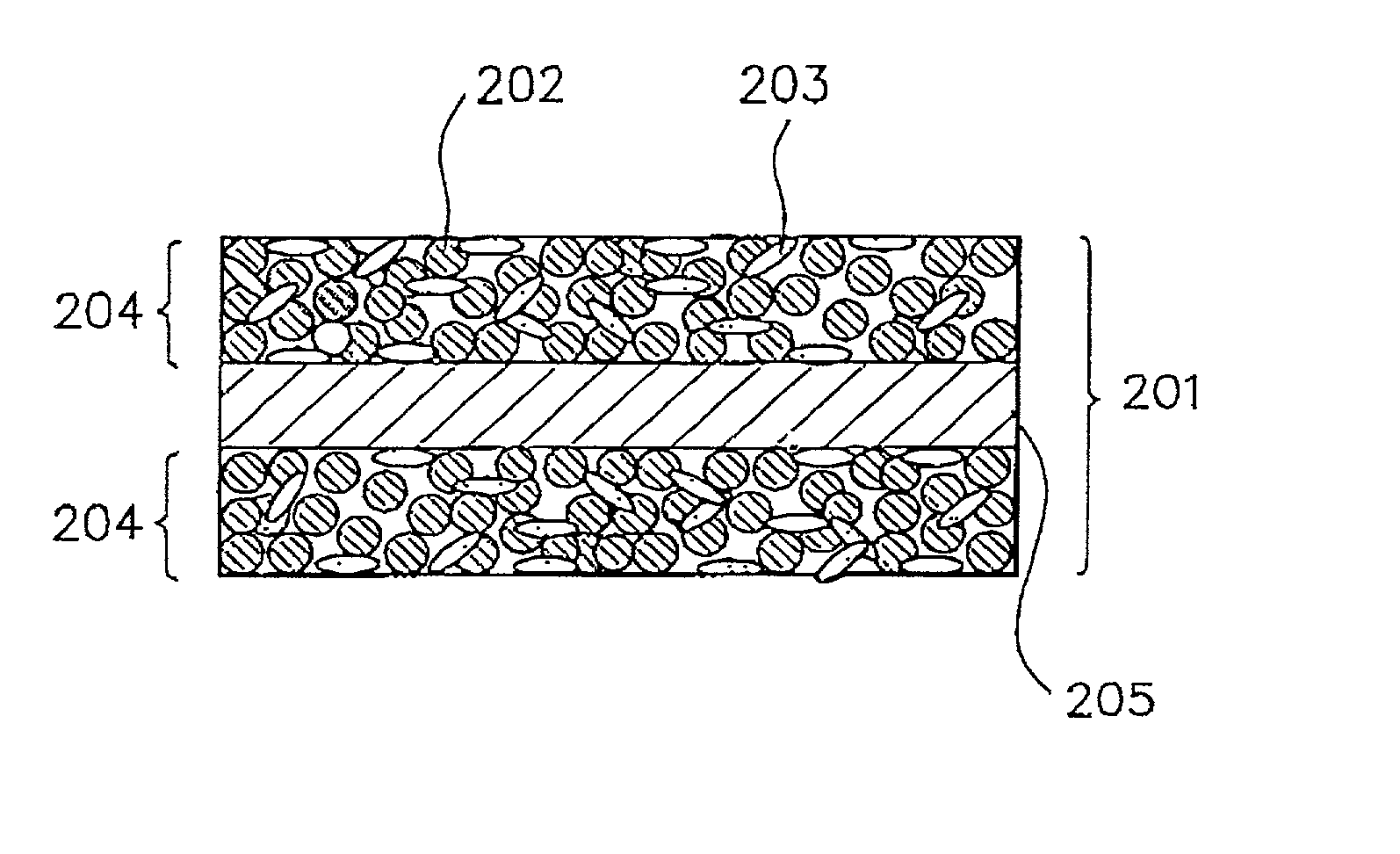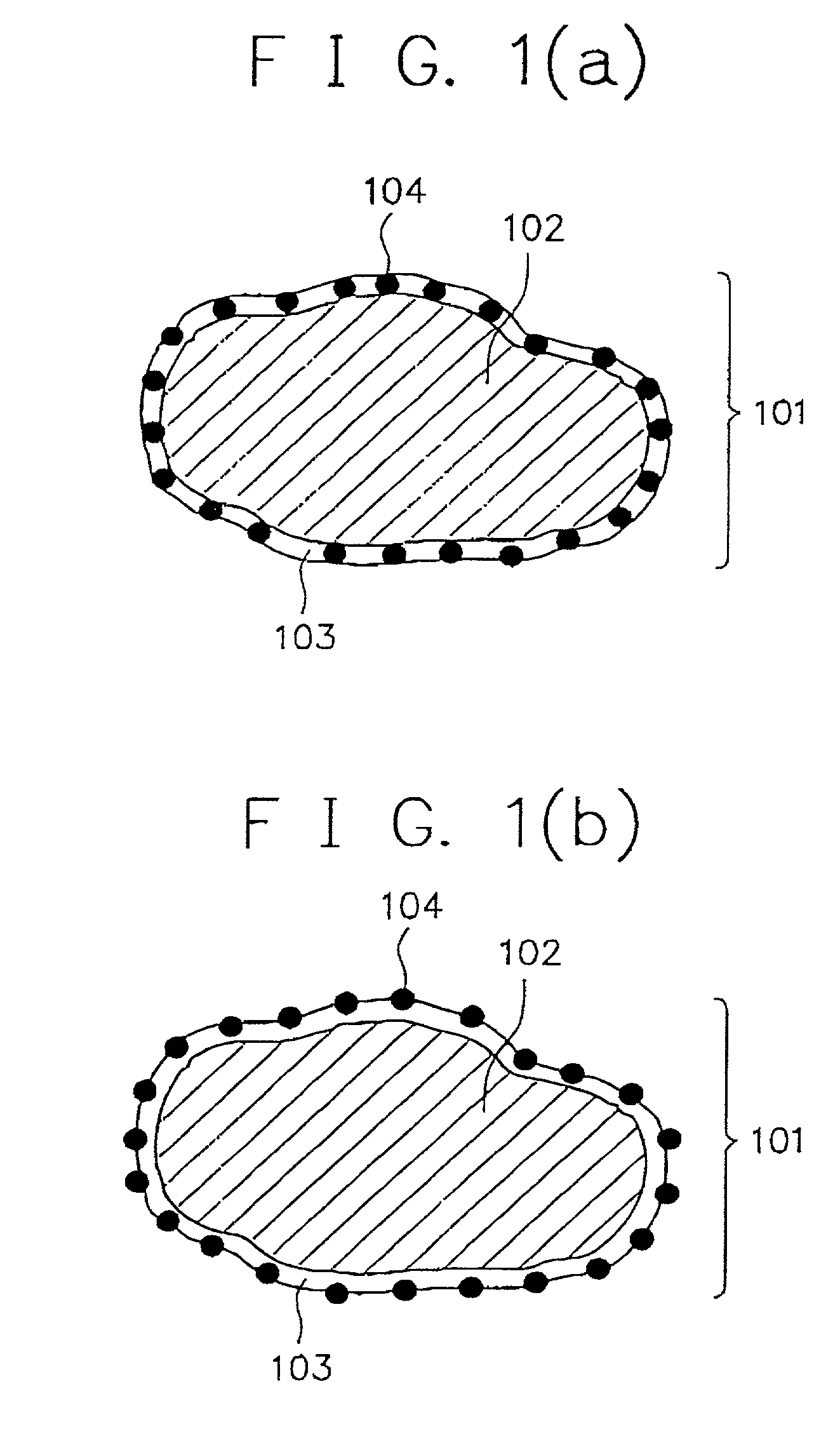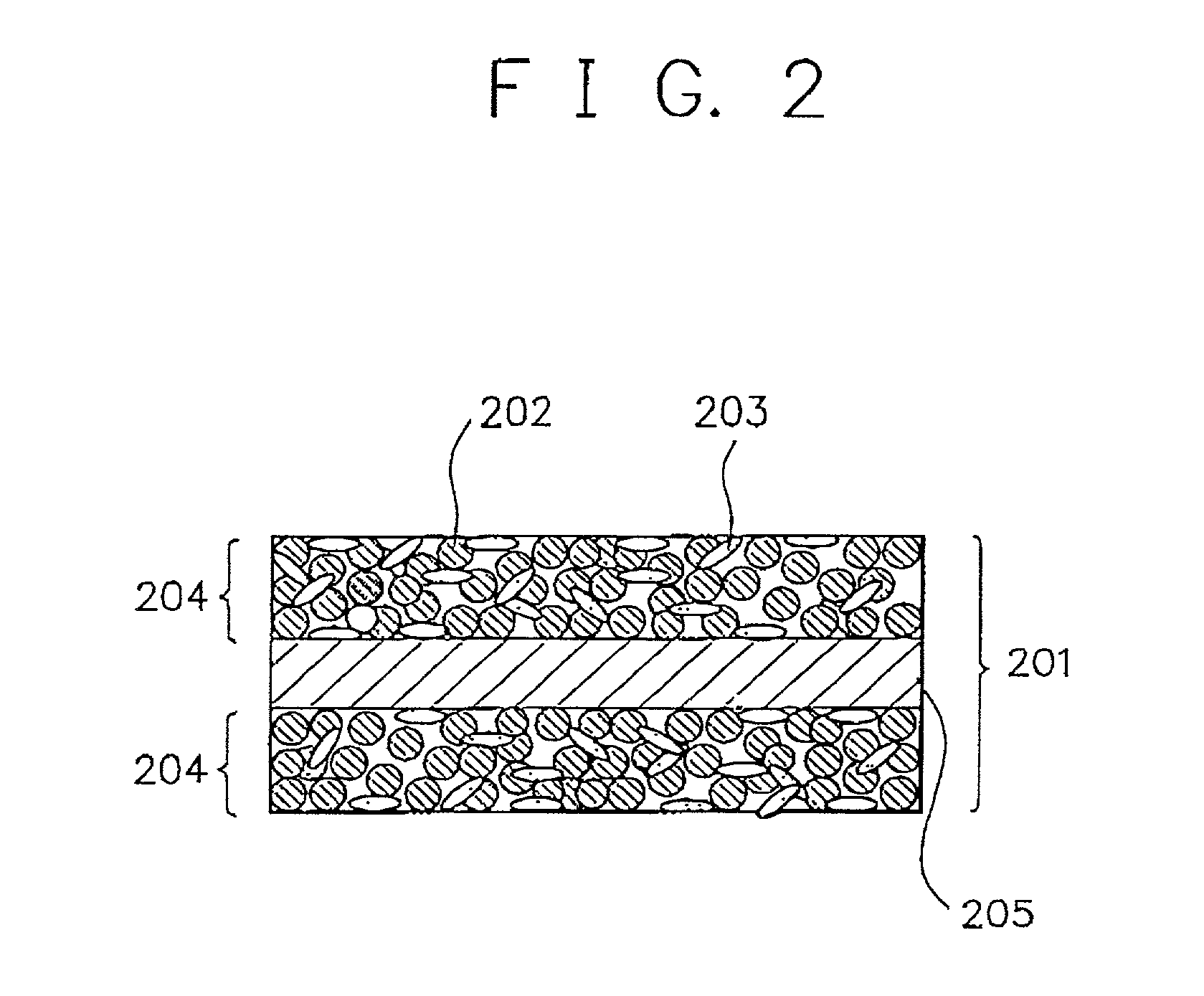Alkaline rechargeable battery and process for the production thereof
a rechargeable battery, alkaline technology, applied in the direction of nickel accumulators, sustainable manufacturing/processing, cell components, etc., can solve the problems of increasing the production cost of rechargeable batteries, gasoline-fueled vehicles also have been an issue, and the reaction activity of laves phase alloy is extremely inferior at the initial stag
- Summary
- Abstract
- Description
- Claims
- Application Information
AI Technical Summary
Benefits of technology
Problems solved by technology
Method used
Image
Examples
example 1
[0185] In this example, a spiral-wound cylindrical type rechargeable battery having such configuration as shown in FIG. 5 was prepared as will be described below.
[0186] 1. Formation of Anode 502:
[0187] (1) Preparation of Hydrogen Storage Alloy Powder:
[0188] A hydrogen storage alloy powder was prepared by a casting process using an arc melting furnace. That is, a powdery zirconium (Zr), a powdery titanium (Ti), a powdery nickel (Ni), a powdery manganese (Mn), a powdery vanadium (V), and a powdery cobalt (Co) respectively in a prescribed amount were mixed to obtain a mixture. The mixture was introduced into the arc melting furnace, where the mixture was heat-fused in an argon atmosphere. The fused material was cooled and subjected to a heat treatment at 1100.degree. C. for 10 hours to obtain an alloy lump. The alloy lump was pulverized by means of hydro-pulverization, followed by subjecting to mechanical pulverization, and sifted an alloy powder with a particle size of less than 200 m...
example 2
[0213] The procedures of Example 1 were repeated, except that the step 1-(2) [preparation of powdery composite material] in the step 1 (formation of anode 502) of Example 1 was conducted as will be described below, to obtain a spiral-wound cylindrical type rechargeable battery.
[0214] Preparation of Powdery Composite Material:
[0215] 97 wt. % of the hydrogen storage alloy powder obtained in the step 1-(1) of Example 1, 1 wt. % of an aluminum powder having an average particle size of less than 20 .mu.m, and 2 wt. % of a carbonyl nickel having an average particle size of less than 1 .mu.m were mixed to obtain a mixture.
[0216] The mixture was introduced together with grinding balls made of alumina into a grinding vessel made of alumina of a tumbling ball mill, where the inside atmosphere of the grinding vessel was replaced by an argon gas atmosphere and the mixture was subjected to a grinding treatment in the argon gas atmosphere at a revolution speed of 120 rpm for 5 hours to obtain a p...
example 3
[0218] The procedures of Example 1 were repeated, except that the step 1-(2) [preparation of powdery composite material] in the step 1 (formation of anode 502) of Example 1 was conducted as will be described below, to obtain a spiral-wound cylindrical type rechargeable battery.
[0219] Preparation of Powdery Composite Material;
[0220] 97 wt. % of the hydrogen storage alloy powder obtained in the step 1-(1) of Example 1, 1 wt. % of a magnesium powder whose maximum particle size is less than 80 mesh, and 2 wt. % of a copper powder having an average particle size of less than 1 .mu.m were mixed to obtain a mixture. The mixture was introduced together with grinding balls made of alumina into a grinding vessel made of alumina of a tumbling ball mill, where the inside atmosphere of the grinding vessel was replaced by an argon gas atmosphere and the mixture was subjected to a grinding treatment in the argon gas atmosphere at a revolution speed of 120 rpm for 5 hours to obtain a powdery compos...
PUM
| Property | Measurement | Unit |
|---|---|---|
| Thickness | aaaaa | aaaaa |
| Thickness | aaaaa | aaaaa |
| Fraction | aaaaa | aaaaa |
Abstract
Description
Claims
Application Information
 Login to View More
Login to View More - R&D
- Intellectual Property
- Life Sciences
- Materials
- Tech Scout
- Unparalleled Data Quality
- Higher Quality Content
- 60% Fewer Hallucinations
Browse by: Latest US Patents, China's latest patents, Technical Efficacy Thesaurus, Application Domain, Technology Topic, Popular Technical Reports.
© 2025 PatSnap. All rights reserved.Legal|Privacy policy|Modern Slavery Act Transparency Statement|Sitemap|About US| Contact US: help@patsnap.com



